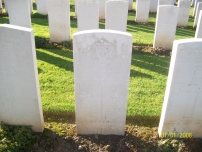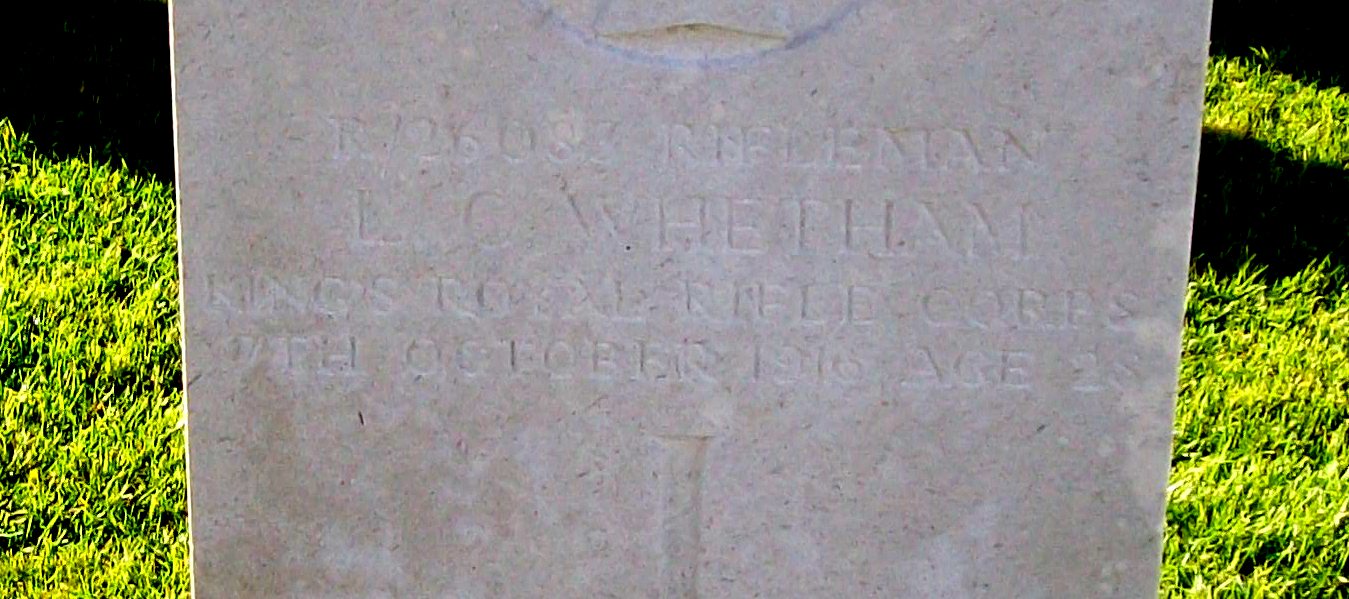| First Name: | Leonard Carr | Last Name: | WHETHAM | |
|---|---|---|---|---|
| Date of Death: | 07/10/1916 | Lived/Born In: | Highbury | |
| Rank: | Rifleman | Unit: | King's Royal Rifle Corps18 | |
| Memorial Site: | ||||
Current Information:Age-28 61, College Street, Highbury Heilly Station Cemetery, Mericourt-l'Abbe, France
The Battle of the Somme (July-November, 1916) By the beginning of October, 1916, the Battle of the Somme had been raging for three months. Thousands of men had already been killed or wounded or were simply missing, never to be seen again and and just a few square miles of the French countryside, all in the southern part of the battlefield, had been captured from the enemy. Mistakes had been made by the various commanders and would be continued to be made but there was no turning back as the British, Australians, South Africans, New Zealanders and Canadians carried on battering away at the German defences in the hope of a breakthrough, So it continued all the way through to November with nearly every battalion and division then in France being drawn into it at some stage. In the end the German trenches had been pushed back a few more miles along most of the line but the cost in lives had been staggering. By the end of the fighting in November, 1916, British Army casualties numbered over 400,000, killed, wounded and missing. The Battle of Transloy Ridge On 1st October, 1916, a new offensive was begun by the British Army. The Battle of Transloy Ridge was the last major operation fought during the battle of the Somme and it continued throughout the first three weeks of the month until the terrible conditions of rain, mud and cold coupled with the sheer exhaustion of the troops, brought things to a standstill. The aim had been to push the enemy further back to the next ridge of higher ground running between Le Transloy and Warlencourt. It was a very hard fight, progress was painfully slow, the casualty figure was shockingly high and the final objective was not achieved despite the best efforts of the attacking divisions. Three factors worked against its success. The first was the weather. It was simply awful. The second was the miles of war torn terrain which soon became a quagmire over which troops, guns, ammunition and all the other supplies had to cross to reach the front and keep the momentum of the offensive going. For the Germans, falling back on their own supply lines across relatively unscathed ground, this was not such a problem. The third factor was the new methods of defence employed by the enemy. They defended in depth without a well defined front line but instead setting up machine-gun nests in shell holes and other strategically important sites where just a few men could hold up an entire battalion. And of course, the German artillery had the whole area covered.
41st Division moved forward at the beginning of October to add their weight to the battle and relieved the ANZACs in the trenches to the east of the village of Flers, or rather the pile of rubble that used to be the village of Flers The battalion diary of the 18th King’s Royal Rifle Corps of 122 Brigade recorded that on 3rd October they moved into close support positions in Goose Alley and Grove Alley, without suffering any casualties and that on the following day they assisted the 15th Hampshire battalion to repel an enemy raid coming down Gird Trench. It also recorded that on 4th October Goose Alley was heavily bombarded all day and that the battalion sustained one hundred casualties. Leonard Whetham died from wounds on 7th October and it is likely that this was when he was wounded. |
||||
Other Photos: |
||||
| « Back to Search Results | ||||
| If you think any of the information shown here is incorrect, Click Here to submit your amends and comments | ||||





